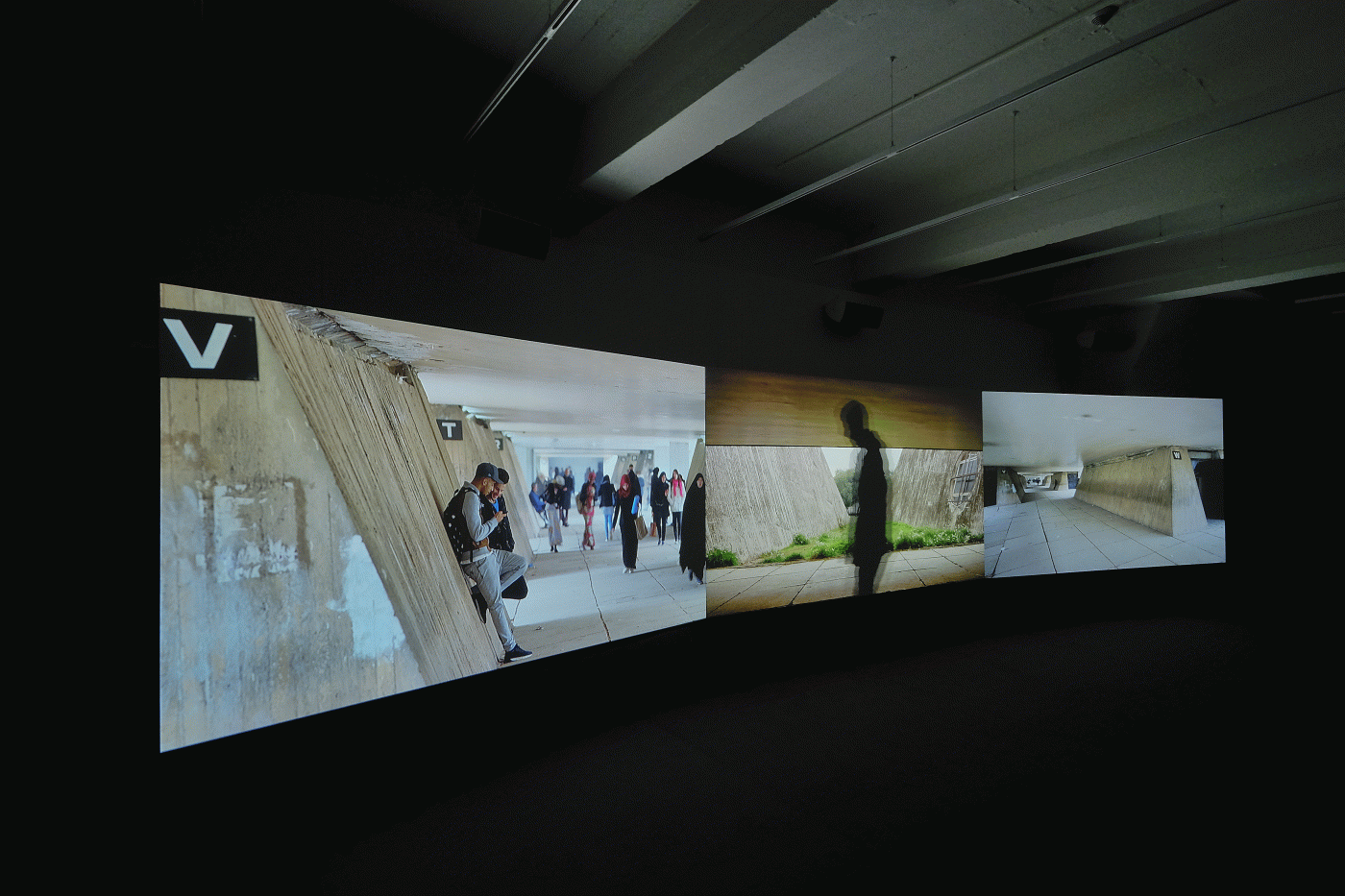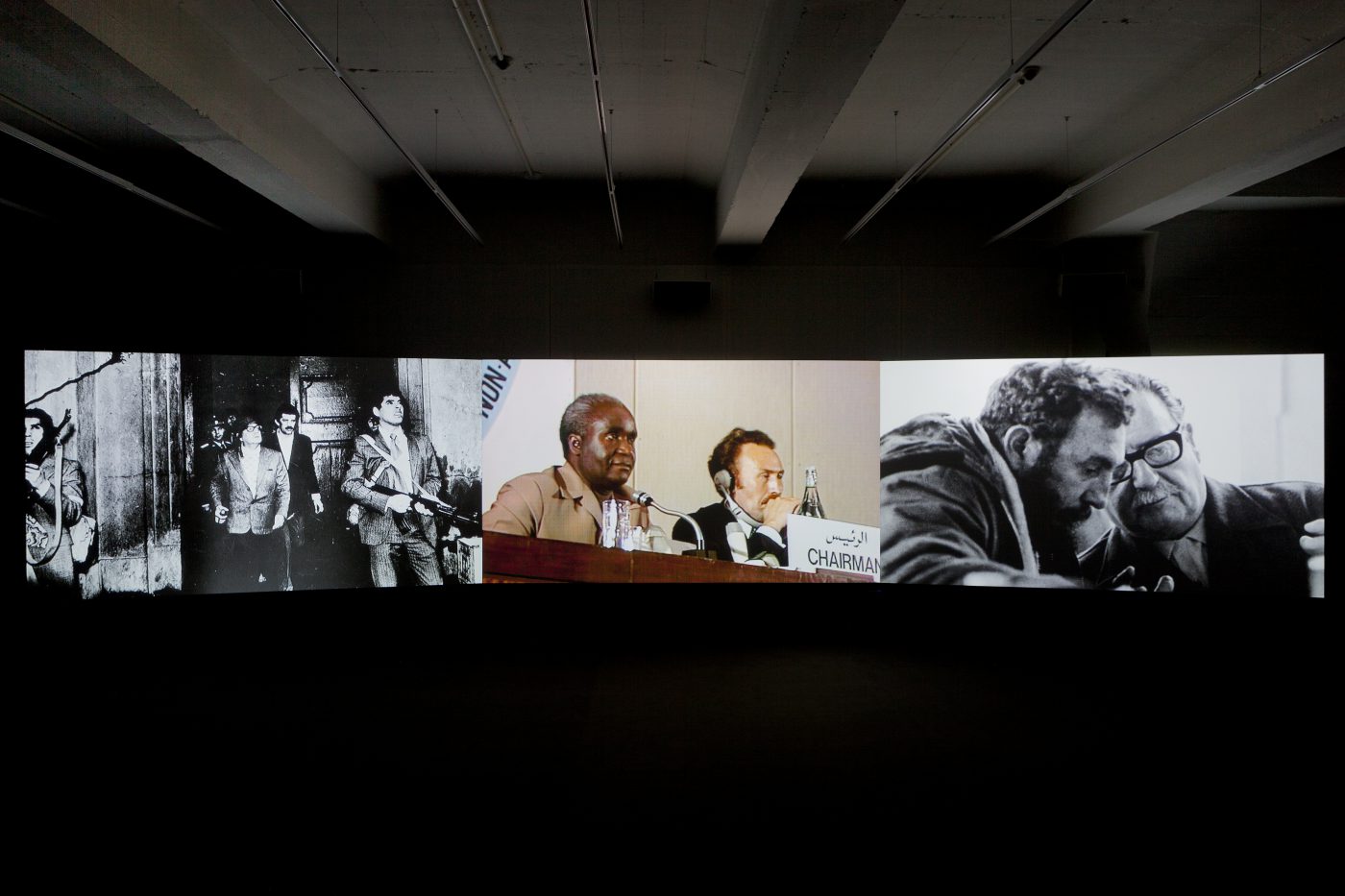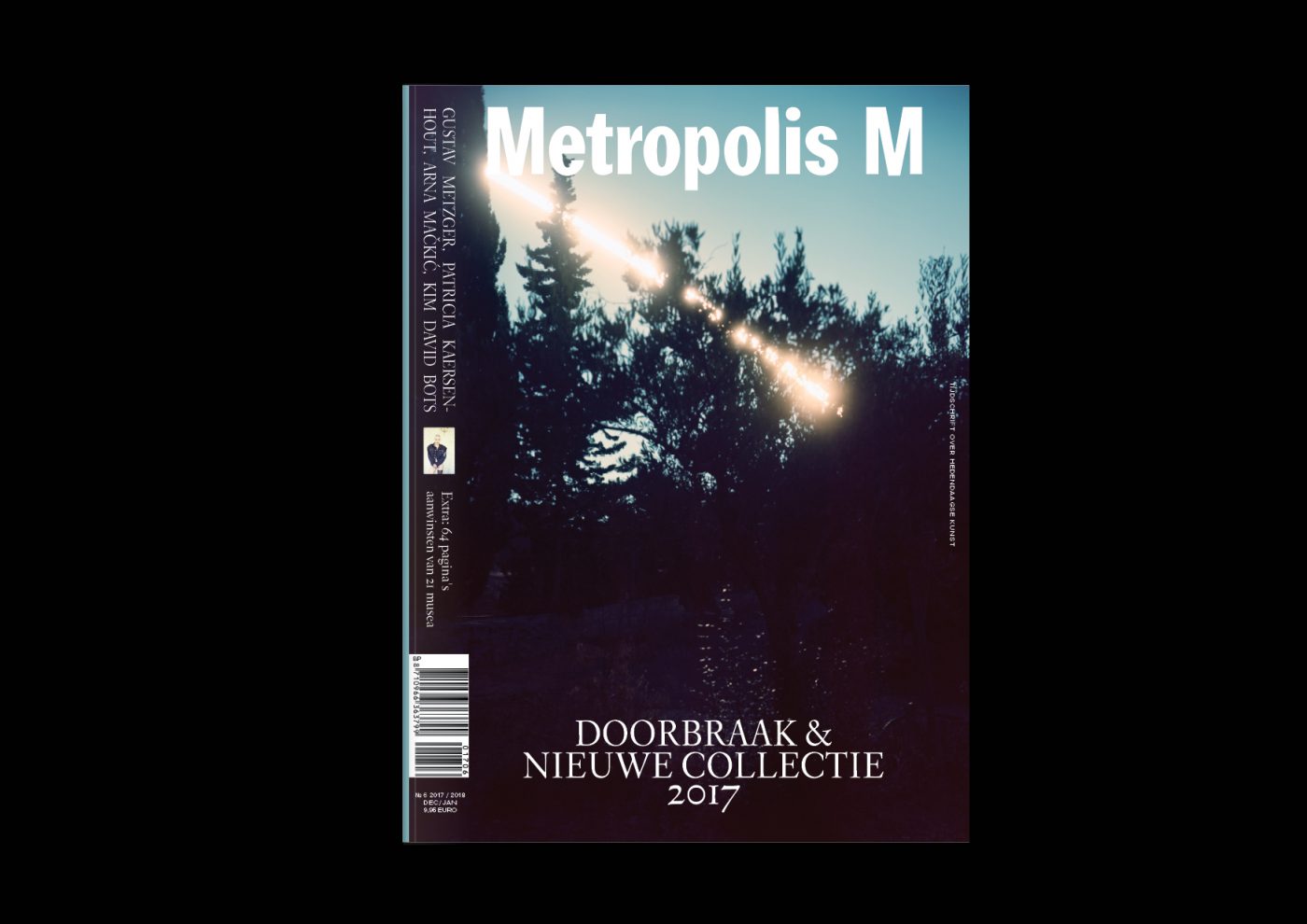
Two Meetings and a Funeral – A Conversation between Naeem Mohaiemen and Hendrik Folkerts
Last year, Naeem Mohaiemen became known to a large audience due to the presence of Two Meetings and a Funeral at documenta 14’s Kassel iteration. This epic film, shown across three screens, tells an almost forgotten story of the rise and fall of the Non-Aligned Movement, an alliance of Third-World countries that tried to form an alternative to the West and the Soviet Bloc. Hendrik Folkerts spoke with him during a conference in Chicago, where Mohaiemen had worked through another politically laden history: Muhammad Ali’s Bangladesh passport (initially presented at documenta 14 Parliament of Bodies, curated by Paul B. Preciado).
HF: I would suggest that one immediate connection between your film, Two Meetings and a Funeral, featured at Documenta 14 in Kassel, and your presentation about Muhammed Ali yesterday at the Returns symposium at the Logan Centre for the Arts in Chicago (organized by Yesomi Umolu), is the moment of transnational resistance. This brief moment of radicality is represented in the film by the Non-Aligned Movement as an intersection of international relationships, and is embodied by the figure of Ali, whose tour of Bangladesh made him an icon of solidarity and independence following that country’s war of independence.
NM: I want to start with something that Dominique Malaquais (of the Institut des Mondes Africains, Paris) said at the Returns conference. She talked about the gatherings of Pan-African solidarity, the four Pan-African cultural festivals (Dakar ’66, Algiers ’69, Kinshasa ’74 and Lagos ’77), culminating in 1977, with FESTAC in Nigeria). For that final event, the Nigerian government had its own agenda. One link between FESTAC ’77 and Muhammed Ali’s Asia trip, as well as to the excursions to Algeria in Two Meetings and a Funeral, is that local context and power struggles are often only partially visible to those attending the event. On the surface, Ali’s was a very celebratory international trip. Underneath that, the problem was that it was also part of a charm initiative by a military government, which was trying to solidify the country’s American tilt, as well as a leaning towards the Muslim world, which was not a universally supported project. There were people inside the country who opposed this shift and wanted to resist. But they were invisible to Ali.
The thing about solidarity is that the act of parsing gaps and dissonance usually comes long afterward: perhaps that is one way for solidarity to sustain itself in the moment. I’ve been working on the sites of disappointment, on things not working out, sometimes to the exclusion of the celebratory aspect. At the Returns conference, one of the things I particularly appreciated was the commemorative impulse. Haki Madhubuti (Third World Press), Abdul Alkalimat (African Liberation Support Committee), and Marilyn Nance’s (The Santana Project) presentations were filled with images of the Pan-African festivals, which are evocative and had the tactile pleasure of archival black-and-white. You were reminded of the potential as you viewed the images. I believe that thinking about Ali’s trip as a moment of disappointment is useful in juxtaposition to the other presentations, which focused on narrating the celebratory moment.
[blockquote]I’ve been working on the sites of disappointment, on things not working out, sometimes to the exclusion of the celebratory aspect
HF: Indeed, you narrated both Ali’s Asia trip and the Non-Aligned Movement as almost tragic, a double-edged sword that carries both radical potential and an inherent sense of the loss of exactly that potential.
NM: I would say there is always the potential of slippage, if alliances are not carefully parsed. At the Bandung Conference in 1955, Afro-Asian unity was a key aspect. But for the Non-Aligned Movement, it was no longer just Afro-Asian unity. There were other strands that came into it.
A key player in Non-Aligned Movement was Yugoslavia. Josep Broz Tito had become wary of Soviet expansionism and wanted to have his own zone of influence (The Non-Aligned Movement was also a power bloc in its own right: it was not innocent of those manoeuvres). There were some conciliatory gestures toward the Soviet Union, but they were not invited to attend. Then there was FESTAC 1977, and the three festivals that preceded it, which focused on Pan-Africanism. This ran parallel to Afro-Asian unity, but they did not completely intersect. Now, within all this, since there was also a socialist undertone, there should have been some form of class alliances. But the Non-Aligned Movement included countries like Saudi Arabia, the Gulf countries– countries that were not signalling towards socialism, so they were an uneasy fit. As early as 1973, the Non-Aligned Movement had major flaws within its ideas of solidarity. In Two Meetings, we see Kenneth Kaunda (first President of independent Zambia) announcing on stage, ‘We wish our brother, Salvador Allende, to prevail.’ Then the text tells you that Allende was killed four days later. The Non-Aligned Movement appeared to be the antithesis of military juntas, yet at the same time, other Latin American leaders were attending the conference in full military dress. So military dictators were also there. The Non-Aligned Movement did not take up a position to invite only democratic countries. This was a contradiction, already in the mix.

HF: Arguably, two of the most revolutionary moments of the 20th century – communism and socialism on the one hand, and decolonization and liberation on the other – were certainly not always aligned, as you suggest. How do you see their (non-)relatedness unfold in the history of the Non-Aligned Movement, or in the political constellations that the movement was a part of?
NM: Or, they went together in a form that was insufficiently thought through. I often wonder how Bangladesh could have shifted so sharply from a Soviet to an American tilt within three years of independence from Pakistan. It suggests that the slogans deployed by the world press during the war [in 1971] were not fully thoight through. Secularism and socialism were the two platforms that came out of that war, but in practice, what those two concepts meant had not been argued sufficiently. That also made it relatively easy to slip away from these ideas, because they had not penetrated the body politic.
What was the common project of Non-Aligned Movement? It was ‘out of alignment’ with the great powers, but it was supposed to be more. In Two Meetings, Singapore’s Foreign Minister Sinnathamby Rajaratnam says that ‘the old cold power’ was over – the Algiers conference was held soon after the signing of SALT I (Strategic Arms Limitation Talks), the first sign of US-Soviet detente. Essentially, he was asking: Now that one of our primary rationales for being together has been removed (the Cold War did not end there, but he did not yet know that), what are we standing for? Singapore was ignored by the Non-Aligned Movement, and the way Rajaratnam had framed his question was not exactly welcomed. He framed it in terms of autonomy in technology, of trading blocs, of shared industrialization. I think that focus on trade-driven growth was a prickly formulation within the rubric of the Non-Aligned Movement. But the association with socialism was also ambivalent. Oil wealth and imported labour were underwriting some of the rapid infrastructure developments of the day. The structural problems of socialism, including what kind of industrialization policy was advisable, remained unaddressed by the Non-Aligned Movement.
It was a certain narrowing of imaginative spaces. Liberation of decolonized nations was a crucial aspect of the 1973 meeting, so it became the unifying element. The disappointment of decolonization was often that the post-liberation economic system, and its leadership, were never addressed. Dominique Malaquais said the same thing: the post-decolonization state often falls into the hands of precisely the force that is least able to transform society.
After this Chicago conference, I realized that, in Two Meetings, we never asked: ‘How exactly did Houari Boumédiène stabilize the country?’ Opposition parties in Algeria might have replied, ‘This was not a liberation regime.’ We do not always ask what the conditions of unity and stability are. At what price, and when is the price too much? When does it poison the system?
HF: What kind of license did you allow yourself in ‘representing’ the Non-Aligned Movement within the politics of its time?
NM: I think there is a useful distinction between academic research into the archives and a project meant to take place in an exhibition context, where I was looking for the feel of the Non-Aligned Movement conference: a certain kind of drama, the visual arc of what appeared to be a relatively sedate meeting. Certain speeches, walks, arrivals, and personas, are visually provocative, what we are drawn to; but they are not where the real work is happening. As people told me, ‘The real things happen in backroom meetings’, where there is no camera. That’s where the communiqués are written. But if you read this meeting on a visual level, you will not produce any complete document, perhaps no document at all. I was recently contacted by a Serbian researcher investigating the Non-Aligned Movement. He watched the film, and is now writing a response on the absence of Yugoslavia in the footage. I think it becomes interesting and complicated if the speculative moments in the film are cited in a context of academic references. They can be, but we then have to get into the difference between the excerpt on screen and the full document.
A historian of the Non-Aligned Movement, or of the Bandung Conference ,might focus on very different people, and they might emphasize that you have to follow the arc from Bandung to the Non-Aligned Movement, taking in all intermediaries, and finally to dissolution. They might have said: Well, you have to look at 1970, ’73, and ’76, and maybe one other conference, and you have to look at this or that player. But for the film, I gave myself permission to go only into 1973, and within that, only a very specific fragment.

HF: One of the key (visual) elements in Two Meetings and a Funeral is the emphasis on place, as an access point to memory and history, or simply as a site that remains. For example, the United Nations archive, or the Palais de acion, are recurrent threads and are narrated on a visual and historical level.
NM: My feelings about the Non-Aligned Movement are connected to the spaces in which the meetings took place: vacuum spaces, memory spaces, sentimental spaces as well. I think that was the core project of the film. And also to point out the complexities of dissemination and disintegration. The hint of the coming collapse is always present in the film.
The Palais de Nacion was the most difficult to get access to, because it is in a restricted area, under military control. We spent many months trying to get in, negotiating the access. That meant that our team had to be very small: everyone had to be individually approved. Once you’ve done this and gone through all the checkpoints, you finally arrive at the venue, and it is empty. The venue has a team who always keep it clean, every day. They keep it spotless. It is sometimes used for conferences, but that was not the case when we were there. People were simply going through their daily rituals. We have some of that on camera, where they’re cleaning the floors, sweeping the room: it’s their daily job. They happened to be replacing the tablecloths at a moment when the camera sweeps past, even though there is no dinner scheduled. But it seems like a dinner is always about to happen. The venue is empty, yet maintained. I know it is sometimes used for conferences. But in that moment, we were struck by the vacancy. Similarly, Coupole was also a vast stadium, with nobody using it, at least on that day.
HF: A memorial. A monument of sorts. We register these places as spaces of memory. Spaces, indeed, where a successive generation engages with history. In that sense, I have to challenge you a bit, regarding what you said in the beginning, in reference to what Dominique highlighted yesterday at the conference, about certain power structures that were happening on a local level not really being included in your film. I actually think that it is through the sites we see in the film that certain structures become more clear, architecturally, poetically, sometimes even sentimentally, how they visualize political undercurrents and intentions. The specific choice to go back to those sites, to see them as architectures of memory, points toward very specific localities, at the time when the sites were built, and to how they continue to be a lingering presence, or even a vacuous site of loss.
NM: Some kind of circuit was completed for us when we went to Boumédiène University – a site that is not a memorial, but is instead in constant use. Students did not even have time to look at our cameras, rushing from class to class within scheduled intervals. In the 1970s, Boumédiène University was part of a push towards science and technology – a push that stalled somewhere in the neoliberal 1980s and ’90s. The film starts with Rajaratnam’s sentiment: ‘We don’t control the technology with which we challenge the imperial powers’. You can see how this leads to Singapore’s focus on becoming a knowledge economy in the 1980s and ’90s. Boumédiène had a modernizing impulse. The University of Science and Technology was coeducational and focused on building the modern, and skilled, citizen. It was a modernizing project, focused on rationality, which could have been another strand of the Non-Aligned Movement. Perhaps Rajaratnam was even inviting that, but nobody responded to his call. It never became a project of the Non-Aligned Movement.
When Boumédiène University opened, interviews with students took place. I watched these, but did not include them in the final cut. Their concerns were everyday. Some students talked about the duration of the classes – how long they were, and how difficult it was to catch all of them. Other students talked about the commute, because it was outside the main city (the city has since expanded). These were the building blocks of a new nation, and a modernizing project. Science and technology were supposed to be a transnational project as well, so why did the decolonization project look away from that? The focus of the 1970s came to be about liberating the last remaining colonies, not on what kind of society you build afterwards. Hannah Arendt asked this question back in the 1950s– what comes after– but somehow her words did not travel far enough.
DIT ARTIKEL IS IN EEN NEDERLANDSE VERSIE GEPUBLICEERD IN METROPOLIS M NR 6-2017/2018 DOORBRAAK. METROPOLIS M KRIJGT GEEN SUBSIDIE. STEUN ONS DOOR JE TE ABONNEREN OP HET TIJDSCHRIFT. ALS JE NU EEN JAARABONNEMENT AFSLUIT STUREN WE JE HET NIEUWSTE NUMMER GRATIS TOE. MAIL JE NAAM EN ADRES NAAR: [email protected]

[1] The four festivals analyzed in Malaquais’ PANAFEST Archive project are: The First World Festival of Negro Arts (Dakar 1966), The First Pan-African Cultural Festival (Algiers 1969), Zaïre 74 (Kinshasa 1974), and The Second World Black and African Festival of Arts and Culture (FESTAC, Lagos 1977).
Hendrik Folkerts
curator Moderna Museet, Stockholm


